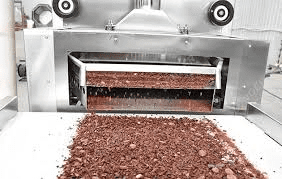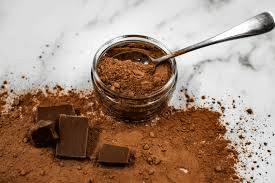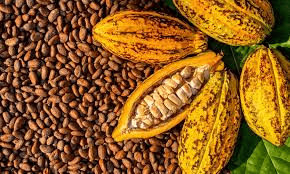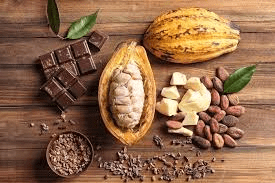Cocoa is a valuable crop that plays a significant role in the global economy, particularly in the chocolate and confectionery industries. Processing, packaging, and exporting cocoa involves a series of well-defined steps to ensure that the final product meets quality standards and is ready for international markets. This guide will provide a clear and straightforward explanation of these steps.
The first step in processing cocoa is harvesting the cocoa pods from the cacao trees. Cocoa pods are typically harvested when they are fully ripe, which is when the pods turn a yellow or orange color. Harvesting is done by hand using a sharp tool to carefully cut the pods from the tree without damaging the branches. Once harvested, the pods are gathered and transported to a central location for further processing.
After harvesting, the cocoa pods are split open to extract the cocoa beans inside. Each pod contains about 20 to 50 beans surrounded by a sweet, sticky pulp. The extracted beans, along with the pulp, are placed in shallow containers, usually made of wood or baskets, to undergo fermentation. Fermentation is a crucial process that lasts from five to seven days, during which the beans are regularly turned to ensure even fermentation. This process helps to develop the flavor of the cocoa beans and is essential for producing high-quality cocoa.
Once fermentation is complete, the cocoa beans are spread out in the sun to dry. Drying is an important step that reduces the moisture content of the beans, preventing mold growth and spoilage during storage and transport. The beans are typically dried on large trays or mats in direct sunlight, and they are turned regularly to ensure even drying. Proper drying can take anywhere from five to seven days, depending on the weather conditions.
After drying, the cocoa beans are sorted and graded based on their quality. Beans are typically sorted by size, weight, and appearance, with any defective or damaged beans removed. Grading ensures that only the best quality beans are selected for export. Once sorted, the beans are packed into sacks or bags for storage and transportation. It is important that the bags are made of breathable material, like jute or burlap, to prevent moisture buildup and ensure the beans remain dry during transport.
Packaging plays a critical role in maintaining the quality of cocoa beans during export. The bags used for packaging should be strong and durable to withstand the rigors of transportation. They should also be sealed properly to protect the beans from contamination, pests, and environmental factors such as humidity and temperature changes. Proper labeling is essential, and it should include information about the origin, weight, grade, and any certifications that the cocoa beans may have.
Exporting cocoa beans requires compliance with international trade regulations and standards. Exporters must obtain the necessary certifications and documentation to prove that the cocoa beans meet the quality and safety requirements of the importing country. This may include phytosanitary certificates, quality certificates, and certificates of origin. Exporters also need to be aware of any specific packaging, labeling, and documentation requirements of the destination country.
Transportation is another critical aspect of exporting cocoa. The beans must be transported in a way that preserves their quality and prevents spoilage. This typically involves shipping the beans in ventilated containers to ensure they remain dry and at a stable temperature during transit. Proper handling during loading and unloading is also crucial to avoid damage to the beans and ensure they arrive at their destination in good condition.
Upon arrival in the importing country, the cocoa beans must go through customs clearance. This process involves checking the documentation and the beans to ensure they comply with local regulations. If everything is in order, the beans are cleared for entry and can be distributed to processors, manufacturers, or other buyers in the importing country.
The process of handling cocoa from harvest to export requires careful attention at each step to ensure the beans are of high quality and suitable for the global market. Starting with the harvesting of ripe cocoa pods, through fermentation, drying, sorting, and grading, each stage is critical to developing the rich flavor and quality of the beans.
Proper packaging, compliance with international regulations, and careful transportation are essential to ensure that the cocoa beans reach their destination in optimal condition.
By following best practices, cocoa producers and exporters can meet the demands of the global market and contribute to the thriving cocoa industry.
How to Process Cocoa for Exportation

1. Harvesting: Harvest cocoa pods when they are ripe. This is typically done by cutting the pods from the trees using a sharp tool. Ensure you select only fully ripened pods, as immature pods will negatively affect the quality of the cocoa.
2. Pod Breaking: Break open the harvested pods to extract the cocoa beans. This process is usually done manually with a machete. The beans are embedded in a white, sticky pulp that needs to be carefully removed.
3. Fermentation: Ferment the cocoa beans to develop their flavor. Spread the beans in shallow boxes or trays and cover them with banana leaves. Fermentation usually takes about 5 to 7 days. During this period, the beans undergo a chemical transformation that is essential for producing quality cocoa.
4. Drying: After fermentation, dry the cocoa beans to reduce moisture content. Spread the beans out in a single layer under the sun, turning them regularly to ensure even drying. This process usually takes about one to two weeks. Proper drying is crucial to prevent mold and ensure the beans are suitable for storage and export.
5. Sorting and Grading: Once dried, sort and grade the cocoa beans. Remove any damaged or moldy beans, and classify them according to size and quality. This step ensures that only high-quality beans are prepared for export.
6. Roasting: Roast the sorted beans to bring out their flavor and aroma. Roasting temperatures and times can vary depending on the desired end product, but it typically ranges from 120°C to 150°C for 20 to 30 minutes. Roasting also helps in removing the outer shell of the beans.
7. Winnowing: After roasting, winnow the beans to remove the outer shell and separate the nibs. The nibs are the valuable part of the cocoa bean, containing the cocoa solids and cocoa butter. Use winnowing machines for efficient separation.
8. Grinding: Grind the cocoa nibs into cocoa liquor, also known as cocoa mass. This is done using grinding machines that produce a smooth paste. The cocoa liquor can be further processed into cocoa butter or cocoa powder, depending on the market requirements.
9. Pressing: Press the cocoa liquor to extract cocoa butter, leaving behind a solid mass called cocoa cake. Cocoa butter is a valuable product used in the production of chocolate, while the cocoa cake can be ground into cocoa powder.
10. Quality Control: Conduct quality control checks at every stage of the process. This includes testing for moisture content, flavor, and texture. Ensuring high quality is crucial for maintaining a good reputation in the export market.
11. Packaging: Package the processed cocoa products in airtight containers or bags to maintain freshness. Use food-grade packaging materials that protect the cocoa from moisture, pests, and contamination. Proper packaging is essential for preserving the quality of the cocoa during transportation.
12. Documentation: Prepare all necessary documentation for export, including certificates of origin, phytosanitary certificates, and quality inspection reports. Ensure that your cocoa meets the import requirements of the destination country.
13. Storage: Store the packaged cocoa in a cool, dry place away from direct sunlight and strong odors. Proper storage conditions are important to maintain the quality of the cocoa until it is shipped.
Read Also: Why Eggs Are Good For You – The Exceptional Super Food for Your Health
How to Package Cocoa for Exportation

1. Select Appropriate Packaging Material: Choose packaging materials that are durable, moisture-resistant, and food-safe. Common options include jute bags, poly-lined bags, or vacuum-sealed bags. Ensure that the materials comply with international food safety standards.
2. Weigh and Portion the Cocoa: Weigh the cocoa products accurately to ensure consistent quantities in each package. Use calibrated scales and portion the cocoa according to the buyer’s requirements. Consistent packaging size and weight are important for uniformity in the export market.
3. Use Vacuum Sealing: For certain cocoa products like cocoa powder or cocoa nibs, consider using vacuum sealing. This method removes air from the package, extending the shelf life and maintaining the freshness of the product during transit.
4. Label the Packages: Label each package clearly with important information such as the product name, net weight, batch number, and country of origin. Include any necessary certifications or quality marks that might be required by the importing country. Proper labeling ensures traceability and compliance with international regulations.
5. Add Desiccants: Include desiccants (like silica gel packs) in the packaging to absorb any residual moisture and prevent mold growth. This is particularly important for cocoa products that are sensitive to humidity.
6. Sealing: Ensure that all packages are sealed securely to prevent contamination and preserve the product’s quality. Use heat sealers or other appropriate sealing methods depending on the type of packaging material used.
7. Secondary Packaging: Place the sealed cocoa packages into larger secondary packaging like corrugated cardboard boxes or crates for added protection. This step helps prevent damage during handling and transportation.
8. Palletization: Arrange the secondary packages on pallets to facilitate easy handling and loading. Use stretch wrap or strapping to secure the packages on the pallet. Proper palletization helps in preventing damage during shipping.
9. Compliance with Export Standards: Ensure that the packaging complies with the export standards and regulations of the destination country. This may include specific requirements for labeling, materials used, and weight limits.
10. Prepare for Inspection: Before shipping, prepare the packaged cocoa for inspection by relevant authorities. This may involve checking the packaging for any damage or ensuring that all labeling is correct and legible.
11. Documentation: Attach all necessary documentation to the shipment, including the packing list, bill of lading, and any required certifications. Proper documentation is essential for smooth customs clearance and compliance with export regulations.
12. Storage Before Shipping: Store the packaged cocoa in a controlled environment until it is ready for shipping. This prevents any deterioration of the product quality due to environmental factors.
13. Transportation to Port: Arrange for the safe transportation of the packaged cocoa to the port or shipping terminal. Ensure that the transport vehicle is clean, dry, and free from contaminants.
How to Export Cocoa for Profits
1. Market Research: Conduct thorough market research to identify potential buyers and understand the demand for cocoa in different markets. Research the price trends, consumer preferences, and import regulations of the target countries.
2. Establish Relationships with Buyers: Build strong relationships with buyers by attending trade fairs, networking events, and using online platforms. Having a reliable network of buyers is crucial for securing profitable deals.
3. Obtain Necessary Certifications: Ensure that your cocoa is certified according to international standards such as Fairtrade, Organic, or Rainforest Alliance. These certifications can increase the market value of your cocoa and make it more attractive to buyers.
4. Set Competitive Pricing: Price your cocoa competitively based on market research. Consider factors like production costs, quality, certifications, and market demand when setting your prices. Offering competitive prices can help you attract more buyers and increase your profit margins.
5. Secure Financing: If needed, secure financing to cover the costs of production, packaging, and transportation. Explore options like trade finance, export credit, or loans from financial institutions. Adequate financing ensures that you can meet your export commitments without cash flow issues.
6. Logistics Planning: Plan the logistics of exporting your cocoa, including transportation, warehousing, and shipping. Choose reliable logistics partners who have experience in handling cocoa exports. Efficient logistics can reduce costs and increase the profitability of your export business.
7. Negotiate Shipping Contracts: Negotiate favorable shipping contracts with carriers to reduce transportation costs. Consider options like bulk shipping or shared containers to lower shipping expenses.
8. Compliance with Import Regulations: Ensure that your cocoa meets the import regulations of the destination country. This includes adhering to quality standards, obtaining the necessary permits, and ensuring that your packaging complies with local requirements.
9. Insurance: Insure your shipment against risks like loss, damage, or theft during transit. Having proper insurance coverage protects your investment and ensures that you can recover losses in case of any unforeseen events.
10. Manage Currency Risks: Manage currency exchange risks by using hedging strategies or setting up accounts in foreign currencies. This helps protect your profits from fluctuations in exchange rates.
11. Monitor Market Trends: Keep an eye on market trends and adjust your export strategy accordingly. Being adaptable to changes in the market can help you stay competitive and maximize your profits.
12. Customer Relationship Management: Maintain good relationships with your buyers by providing excellent customer service, timely deliveries, and consistent product quality. Satisfied customers are more likely to offer repeat business and recommend you to others.
13. Continuous Improvement: Continuously seek ways to improve your production, packaging, and export processes. Implementing best practices and staying up-to-date with industry developments can help you stay ahead of the competition and increase your profitability.
Read Also: Trichomoniasis: Description, Damages Caused, Control and Preventive Measures
Frequently Asked Questions (FAQs) About Cocoa

1. What is the ideal climate for growing cocoa?
Cocoa grows best in tropical climates with consistent temperatures between 21°C to 32°C, high humidity, and regular rainfall. Countries like Ivory Coast, Ghana, and Indonesia are leading cocoa producers due to their favorable climates.
2. How long does it take for a cocoa tree to start producing pods?
A cocoa tree typically takes 3 to 5 years to start producing pods after planting. However, it can take up to 10 years to reach full production capacity.
3. What are the different types of cocoa beans?
The three main types of cocoa beans are Forastero, Criollo, and Trinitario. Forastero is the most widely produced and has a strong flavor, Criollo is rarer and has a delicate flavor, while Trinitario is a hybrid of the two with a balanced flavor.
4. Why is fermentation important in cocoa processing?
Fermentation is crucial as it develops the flavor and color of the cocoa beans. It also helps break down the bitter compounds in the beans, resulting in a smoother and richer flavor profile. Without proper fermentation, the beans would lack the characteristic taste of chocolate.
5. How can I ensure my cocoa is of export quality?
To ensure your cocoa is of export quality, follow strict quality control measures during harvesting, fermentation, drying, and storage. Proper fermentation and drying are crucial, and the beans should be free from mold, pests, and other contaminants. Regular quality testing and adherence to international standards can help maintain high-quality cocoa.
6. What certifications can increase the value of my cocoa?
Certifications like Fairtrade, Organic, and Rainforest Alliance can significantly increase the value of your cocoa. These certifications demonstrate that your cocoa is produced sustainably, ethically, and without harmful chemicals, making it more attractive to buyers who prioritize ethical sourcing.
7. What is the shelf life of cocoa beans?
Properly dried and stored cocoa beans can have a shelf life of up to 5 years. However, the flavor and quality may start to degrade after 2 years. It’s important to store cocoa beans in a cool, dry place away from direct sunlight and strong odors to preserve their quality.
8. How do I transport cocoa for export?
Transport cocoa beans in jute bags or other breathable packaging to prevent moisture buildup. Use pallets to keep the bags off the ground and ensure the transport containers are clean, dry, and well-ventilated. For long distances, consider using refrigerated containers to maintain the quality of the cocoa.
9. What are the main export markets for cocoa?
The main export markets for cocoa are the European Union, the United States, and Asia. Countries like the Netherlands, Germany, and Belgium are major importers due to their large chocolate manufacturing industries. It’s important to research and target the most profitable markets for your cocoa.
10. How can I differentiate my cocoa in a competitive market?
You can differentiate your cocoa by focusing on quality, obtaining certifications, and highlighting unique aspects like single-origin or organic production. Building strong relationships with buyers and maintaining consistent quality can also set your cocoa apart in a competitive market.
Read Also: The Ultimate Guide to Unlocking the Potential of Garbage Wastes

